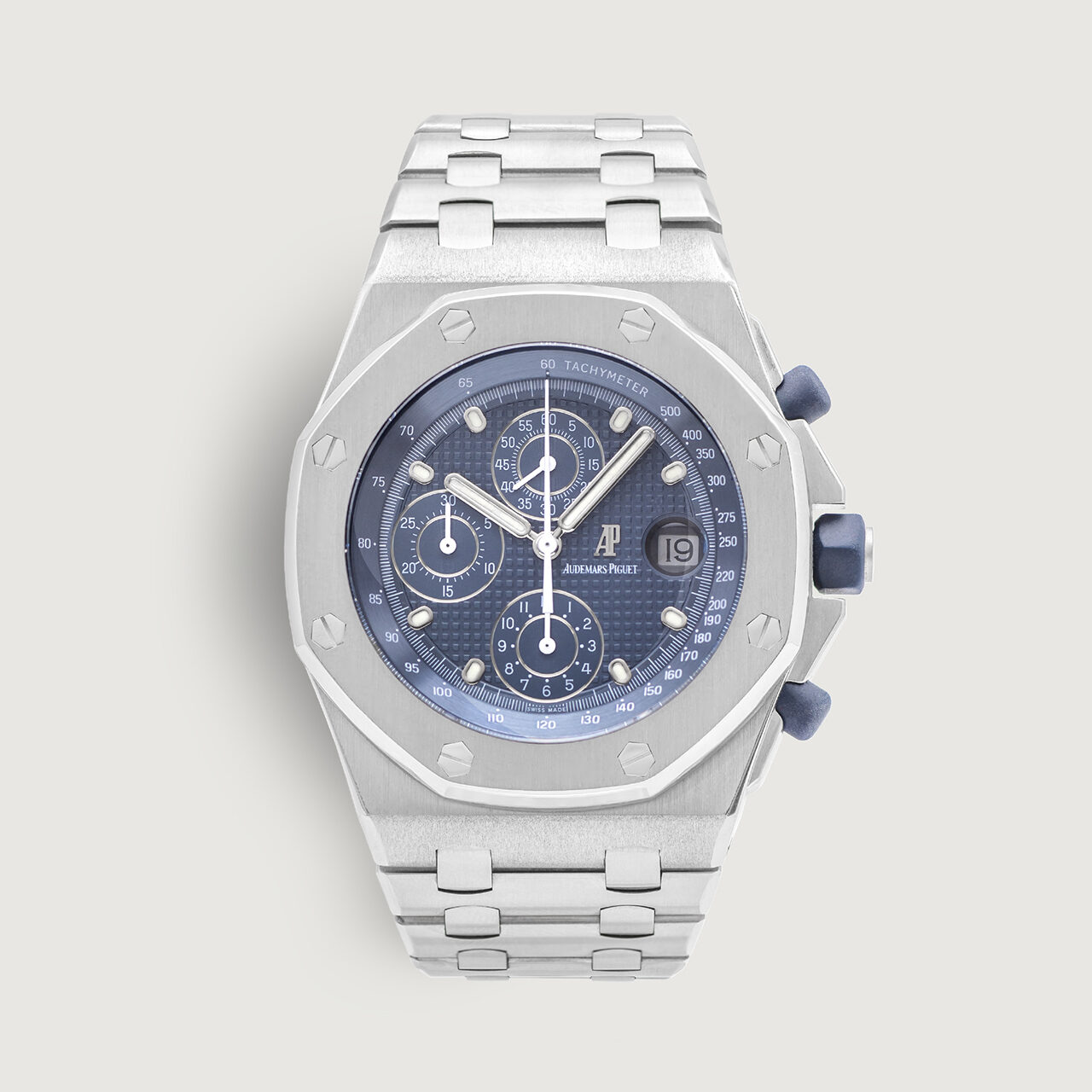Cartier Tank Louis New York Extra Plate
SOLD
Out of stock
DETAILS
The Cartier Tank Louis Mecanique is among the most classic designs from Cartier. It is a timepiece that transcends passing trends and remains as iconic and elegant as ever. This rare example, crafted in 18-carat yellow-gold dates to circa 1971-72. While Cartier illustrates some of the greatest watch designs, their watches housed quality movements supplied by other manufactures often by European Watch & Clock Co and Jaeger-LeCoultre. This example retains its original a manual wind movement produced and signed by Jaeger-LeCoultre with US import code VXN.
The 18-carat yellow-gold case is in excellent condition overall, showing some light wear consistent with age and use. The case back retains its Cartier stock numbers and Paris hallmarks. Cartier watches from this period with serial number beginning with 0 are believed to have been retailed by Cartier in New York which corresponds with the movement import code. The case measures 30.5mm by 23.5mm and features no screws in the sides of the case securing the case back (which is typically seen with Cartier watches). This allows the case to have a slimmer profile and hence referred to as the Tank Louis Ultra Thin or Extra Plate.
The dial signed Paris, shows some small signs of age. The original blue steel hands are complimented by the original sapphire cabochon crown. The watch features a black leather strap and 18k solid gold Cartier deployment clasp.
Overall this a great example of an original Tank Louis retailed by Cartier New York in the early 1970s.
| LOCATION | London – UK |
|---|---|
| BRAND | Cartier |
| MODEL | Tank Louis Extra Plate |
| YEAR | 1971-72 |
| METAL | 18K Yellow-Gold |
| MOVEMENT | Mecanique, Manual Wind |
| CASE DIAMETER | 23.5mm |
| BRACELET/STRAP | Leather Strap w/ 18-Carat Yellow-Gold Cartier Deployment Clasp |
STORY BEHIND
Cartier History
Founded in 1847 by Louis-François Cartier after taking over the Parisian-based workshop of his mentor, Adolphe Picard, Cartier has grown from a relatively tiny family business into one of the world’s largest household-name jewellers. While the brand’s success has been immense, it is better attributed to Louis-François’ sons, Louis, Pierre and Jacques, who took charge of the brand in various regions. Louis led the Paris workshop while Pierre went stateside and opened a workshop in NYC in 1909. Just eight years later, in 1917, Pierre opened the iconic 653 Fifth Avenue location, which Cartier still finds itself in to this day.
While the brand’s popularity was originally attributed to their jewellery, the development of their wristwatch business drove the jeweller to new heights. In 1904, Cartier’s first men’s wristwatch, the Cartier Santos, was born when famed aviator Alberto Santos-Dumont told Louis Cartier about the impracticalities of using a pocket watch during flight. Seeing a solution to the problem, Louis designed the Cartier Santos as a wrist-mounted timepiece with a square case, angular bezel and manually-wound movement. In 1907 the brand entered into an agreement with Edmond Jaeger to supply movements to the brand, and from then on, the brand’s reputation was equally rooted in their watches as it was their jewellery. Following the Santos, Cartier released watches like the Tank, the Tortue and several other iconic watches.
Throughout their history, Cartier have developed an incredibly strong reputation as a revered watchmaker thanks to their partnerships with esteemed watchmakers like Edmond Jaeger (who would later enter into a partnership with LeCoultre leading to the Jaeger LeCoultre brands as we know today) and brands like Vacheron Constantin and Audemars Piguet.
While their reputation waned in the 80s and 90s as they turned to jewellery-oriented quartz timepieces, they made a conscious effort to turn things around in the late 90s with a programme that became the birthplace of some of their most sought-after modern watches.











